Welcome to the A to Z of Bonsai.
We are compiling a worldwide A to Z of Bonsai database. The A to Z is written collaboratively by the people who use it and we would like to encourage anyone reading this page to contribute to what has become the worlds greatest encyclopedia of bonsai terms. Entries when they are made will be added to an editable list which will be checked prior to publication. Photos and images of the bonsai term can be added and links made to relevant web pages.
|
 - 20 entries - 20 entries |
|
 |
|
|
   |
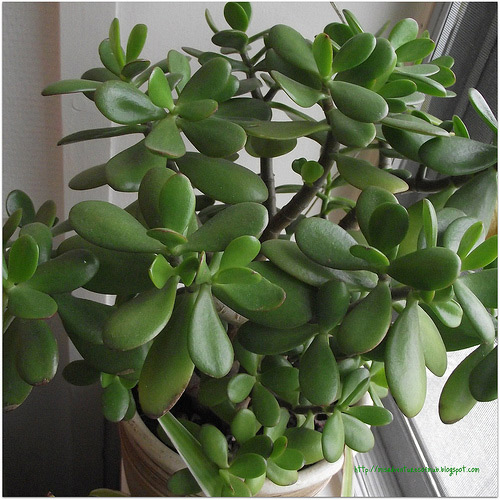
|
JADE - (CRASSULA ARBORESSCENS/OVATA) - Also known as "Money Tree". Technically not a tree but a succulent of which there are many varieties but arborescens is the most common for BONSAI>BONSAI>BONSAI. The "spongey" trunk bears thick, round, grey-green LEAVES which are borne in pairs at right angles to the previous pair.
WARNING : Water can be the worst enemy of the jade plant. They put out ROOTS in dry soil to find water, whereas other SPECIES only root where water is present. Never keep roots constantly wet.
|
| Thanks to - Wikipedia for use of the image |
|
 |
|
|
   |
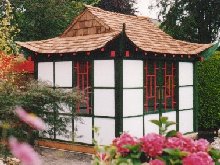
|
JADE PAVILLIONS - Jade Pavilions designs, builds and installs a range of unique, contemporary teahouses, pavilions, bridges and entrances with a nationwide installation service and international delivery.
Contact - Jade Pavilions,
Unit 6 Underwood Business Park,
Wookey Hole Road,
WELLS,
SoMErset.
BA5 1AF
Tel: 07967 640 761 or
Fax: (44) 01749 672 362
Email: momiji@jade-pavilions.com
Please note that this will be changed regularly to avoid unnecessary SPAM. Please use the reply address for your Address Book.
|
| Thanks to - Jade Pavilions for use of the image |
|
 |
|
|
   |
(No Photo Yet)
(Send Image) |
JAPAN JOURNEYS - Agent for tours of Japan - includes specialist BONSAI>BONSAI>BONSAI tour, amongst others.
|
|
 |
|
|
   |
(No Photo Yet)
(Send Image) |
JAPANESE LARCH - The Japanese larch (LARIX KAEMPFERI) is a slender, upright trees with bright green, NEEDLE-like LEAVES, which turn golden in autumn before shedding in winter.
The Japanese larch is distinguishable by its red/orange new twigs which darken to almost purple in winter.
See LARCH (LARIX) for details
|
|
 |
|
|
  |
(No Photo Yet)
(Send Image) |
JAPANESE MAPLE - See ACER PALMATUM.
|
|
 |
|
|
  |
(No Photo Yet)
(Send Image) |
JAPANESE TERMS (LIST) - Most of the mainstream terms relating to tree type, style or tree parts can be found defined individually in the appropriate section of this AtoZ.
The attached website provides a comprehensive list of Japanese terms related to BONSAI>BONSAI>BONSAI which also includes soME of the less common terms.
|
|
 |
|
|
  |
(No Photo Yet)
(Send Image) |
JASMINE - WINTER (JASMINUM NUDIFLORUM) - Bears rich, yellow FLOWERS on leafless stems during winter, followed by profuse, narrow, green LEAVES in spring and sumMEr.
STYLE : Suitable for informal upright, slanting, semi-cascade, root-over-rock and CLUMP styles.
WARNING : Shelter from winter winds. Avoid waterlogging, especially if frost expected.
|
|
 |
|
|
  |
(No Photo Yet)
(Send Image) |
JASMINE ORANGE (MURRAYA PANICULATA) - Jasmine is a TROPICAL, EVERGREEN shrub with mid-green, oval LEAVES in PINNATE form and white, aromatic, bell-SHAPEd FLOWERS, which develop into orange berries. Also known as Satinwood tree because of its pale, smooth BARK.
STYLE : Suited to informal upright, slanting, semi-cacscade, twin trunk, CLUMP and group styles.
WARNING : needs minimum temperature of 17 degrees centigrade, so should only be grown indoors in temperate climate - but needs shading from hot sumMEr sun.
|
|
 |
|
|
  |

|
JIN - In BONSAI>BONSAI>BONSAI, jin is the Japanese term that refers to a dead branch which has lost its BARK. It may also be used as a verb i.e. to jin (a branch).
In the wild, dead branches are eventually bleached white or pale grey by the eleMEnts. This occurs commonly in confers, especially JUNIPERS and pines, but less so in DECIDUOUSTREE>DECIDUOUS TREEs (oak would be an exception).
The process is replicated in bonsai by shortening branches to stubs, stripping the bark and splintering the HEARTWOOD to a naturalistic form. The jin may then be arificially bleached in order to reproduce the colour seen in nature.
Jin means "God" and is symbolic of the Supreme Being's influence on nature.
|
| Thanks to - Scottish Bonsai Association for use of the image |
|
 |
|
|
  |
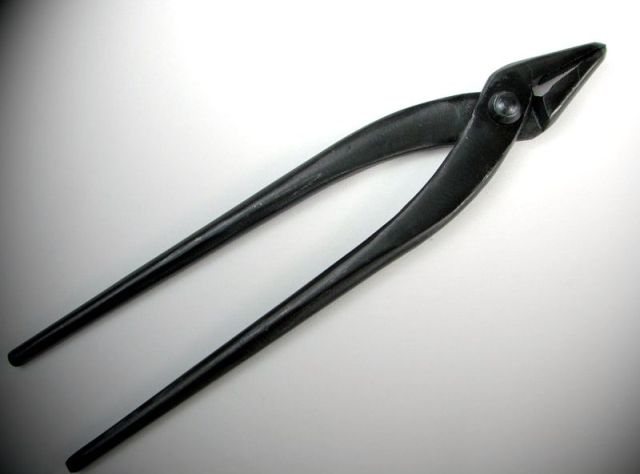
|
JINPLIERS>JIN PLIERS - These specialist pliers are normally used for the forming of jin.
They (often but not always) have a "bent nose" which facilitates the gripping and tearing of BARK and wood when stripping a stub down to HEARTWOOD.
They are also useful for holding and bending the thicker gauges of wire.
|
| Thanks to - Kaizen Bonsai for use of the image |
|
 |
|
|
   |
(No Photo Yet)
(Send Image) |
BONSAI>BONSAI>BONSAI>JOHN MILTON BONSAI - Blog of a young Englishman working as a bonsai student in Japan.
|
|
 |
|
|
   |

|
BONSAI>BONSAI>BONSAICERAMICS>JOHN PITT BONSAI CERAMICS - Based in Derbyshire, UK - maker of high quality hand-made Bonsai and ACCENT POTs for the discerning enthusiast. Very interesting section on website on pot selection criteria. Pots can be reserved or commissions ordered. Not all pots for sale are in the online shop. Need to contact to check stock. UK delivery is free.
Contact :
•Email: john@johnpittbonsaiceramics.co.uk
•Telephone/Fax: 01283 733479
•Mobile: 07940 580634
Please contact ME if you want to commission a pot or see if I have anything suitable on the shelf
|
|
 |
|
|
  |
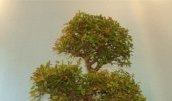
|
JU-SHIN - Top of the tree. It is also called ''ATAMA'' (head of the tree) and ''shin'' (APEX of a tree).
In preparing for a BONSAI>BONSAI>BONSAI tree's SHAPE, the appearance of its top in a satisfactory form affects the status of the tree.
|
| Thanks to - British Bonsai for use of the image |
|
 |
|
|
   |
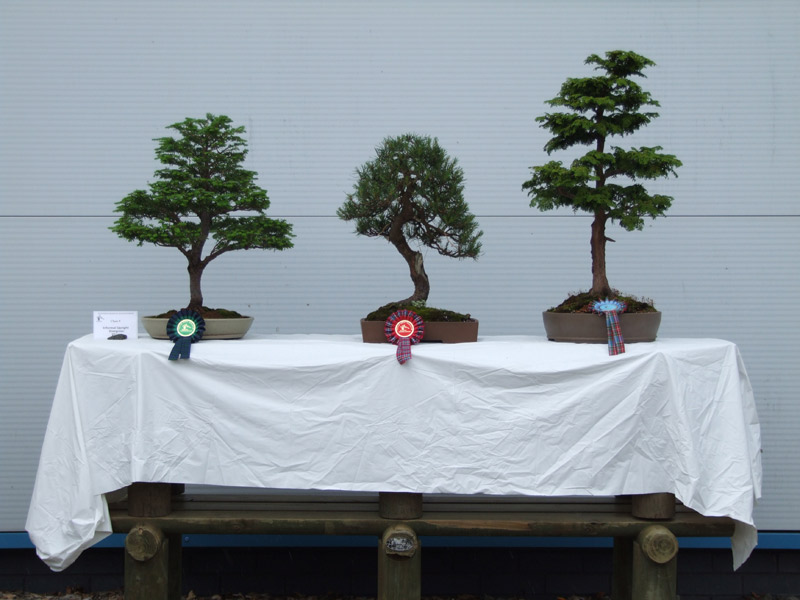
|
JUDGING CRITERIA - There are several key aspects which are considered in judging a BONSAI>BONSAI>BONSAI in bonsai competitions. The following list describes the key areas which are usually individually weighted in "scoring" a tree, although at the end of the day significant personal interpretation and judgeMEnt is applied when considering these aspects :
- Overall artistic effect
- Trunk base and root spread
- Trunk structure, TAPER and BARK
- Precision of PRUNING, WIRING and pot position
- Presentation and health of tree and any UNDERPLANTING or moss.
- Miniaturisation of LEAVES
|
| Thanks to - SBA Bonsai Image Gallery for use of the image |
|
 |
|
|
  |
(No Photo Yet)
(Send Image) |
JUKEI - The Japanese word for “style” describing the SHAPE or form of a BONSAI>BONSAI>BONSAI.
|
|
 |
|
|
   |
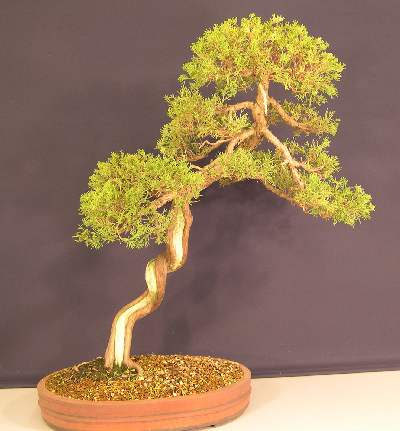
|
JUNIPER - CHINESE (JUNIPERUS SINENSIS) - EVERGREEN tree originating from mountains of Japan is distinguished by rich, green, cloud-like foliage emanating from flaky, grey/brown BARK covered trunks which, in older speciMEns, can be gnarled and TWISTED with areas of naturally occuring, exposed "DRIFTWOOD".
Most common VARIETY used in BONSAI>BONSAI>BONSAI is Sargentii but Aurea, Japonica, Kaizuka and Pyramidalis are also used.
STYLE : All styles except broom
WARNING : Pot grown plants can shed branches as the tree does naturally in the wild. If extending SHOOTS are left uncut then inner foliage will die off, spoiling the overall SHAPE
|
| Thanks to - Peter Thorne, Ayr for use of the image |
|
 |
|
|
  |
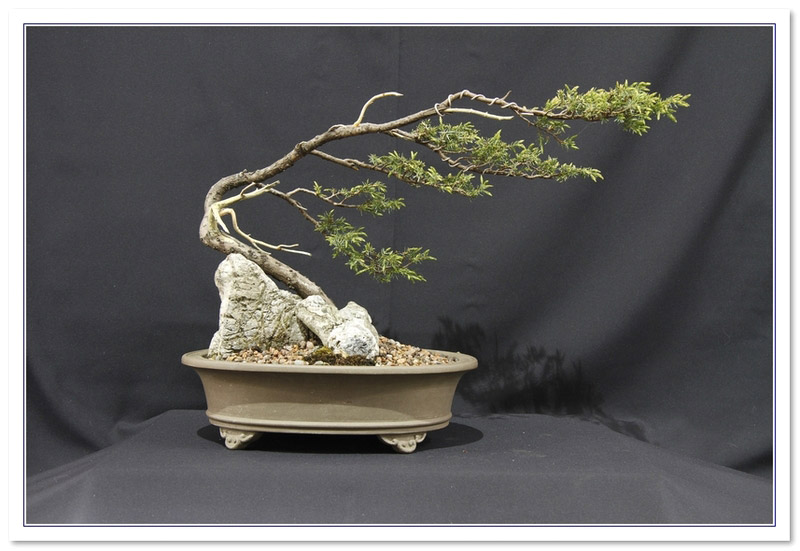
|
Juniper - NEEDLE (Juniperus rigida/COMMUNIS) - EVERGREEN tree originating from mountains of Japan is distinguished by its needle like LEAVES which grow in groups of three on slender SHOOTS. The BARK is brown and flakes away to show orange/red underbark. Often in BONSAI>BONSAI>BONSAI this is combined with silver grey DRIFTWOOD sections. The female tree will bear green berries if grown alongside a male and these turn to purple/black over the next two years.
STYLE : All styles except broom
WARNING : PRUNING can cause overcrowded foliage mass which harbours pests. To prevent this, prune outer end so fthe foliage twigs once per year, leaving younger shoots growing from further back.
|
|
 |
|
|
  |
(No Photo Yet)
(Send Image) |
JUNIPER - SQUAMATA (JUNIPERUS SQUAMATA) - Originally from Nepal this HARDY>HARDY, EVERGREEN tree is distinguished by rich, orange/brown BARK and feathery, silver-blue foliage.
The dense growth pattern, flexible branches and ability to regenerate SHOOTS make it an ideal subject for BONSAI>BONSAI>BONSAI.
STYLE : All styles except broom
WARNING : Particularly vulnerable to SPIDER MITE. Young shoots are easily detached from branches.
|
|
 |
|
|
  |
(No Photo Yet)
(Send Image) |
JUNIPERS - Author : Wayne Schoech:
Part of the "BONSAI>BONSAI>BONSAI Today Masters Series) Junipers is an extensive collection of detailed articles from Bonsai Today.
|
|
 |
|
|
   |
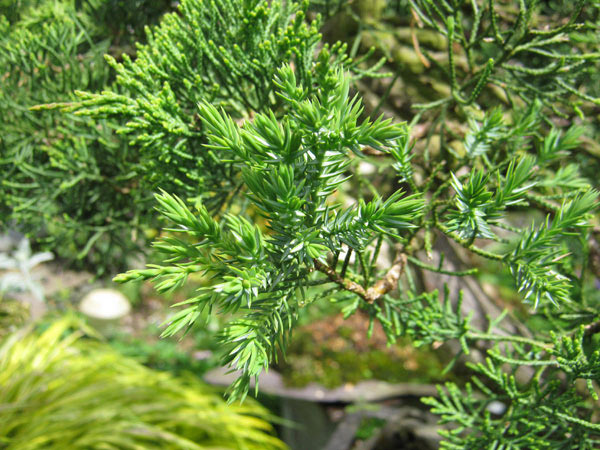
|
JUVENILE FOLIAGE - The juvenile LEAVES of a tree with distinctly different types of mature (terMEd adult) foliage.
For example, the juniper has scale-like leaves when, mature and NEEDLE-like leaves when juvenile. Both juvenile and adult foliage can be seen on the attached juniper photograph.
|
| Thanks to - Internet Bonsai Club for use of the image |
|